
— Sam Charlwood
For all the marketing buzz and rhetoric around them, plug-in hybrid electric vehicles (or PHEVs for short) have generally fallen short of expectations in Australia. Limited electric range, costly purchase prices and blunted on-road dynamics meant these ‘best-of-both-worlds’ electrified propositions were often heftier and dearer alternatives to a garden-variety petrol or diesel.
However, Chinese manufacturer GWM is ready to steer the segment right with its improved battery tech, and its new Haval H6GT PHEV promises to put PHEVs on the radar once and for all – this is an affordable, well-packaged plug-in hybrid that actually works.
At the time of writing, the Haval H6GT PHEV is priced from $53,990 drive away in Australia – a relative bargain in PHEV terms yet still a healthy premium over the regular H6GT petrol on which it is based, which costs $45,990 drive away.
Both models are based on the highest Ultra specification of H6GT; those after a more value-oriented offering might consider the less sporty Haval H6 instead.
For the month of March 2025, GWM is throwing in a 6.6kW AC charger with every H6GT PHEV purchase, giving prospective owners a handy head start (sans installation costs) on their electrified journey.
The H6GT PHEV’s pricing compares favourably to rivals, with the most obvious being the Mitsubishi Outlander PHEV starting at $57,290 plus on-road costs. The value advantage becomes clearer once equipment levels are considered, too. Premium paint for the H6GT PHEV costs $495.
It is backed by a seven-year/unlimited kilometre warranty, a separate eight-year/unlimited kilometre warranty on the battery and hybrid drivetrain, five years’ roadside assistance, and a five-year capped price servicing program.
With respect to the latter, GWM says the H6GT PHEV will cost owners $2080 to service over five years/70,000km, which is middle of the road.
At a glance, the GWM Haval H6GT PHEV offers all the bells and whistles commensurate with a flagship SUV. Closer inspection, however, reveals it’s missing some important finishing touches.
The interior bristles with a tasteful mix of soft-touch materials at contact points, contrasting stitching, a gaping panoramic sunroof, and thoughtful storage and layouts across both rows of seating.
Up front, there’s a generous offering of open cubbies, cupholders and charging points. It certainly bodes well in terms of the car’s everyday amenity.
There’s a decidedly sporty veneer to the cabin, too: the front seats offer adequate support and bolstering and the driver positioning is surprisingly well considered – low slung enough to cultivate meaningful feeling and feedback on the road, while affording ample outward vision (with the slight exception of the narrow rear window).
Digging a little deeper does reveal a few gripes. For example, the minimalist centre fascia and its lack of hardwired buttons means multiple steps are required via the centre touchscreen for what should really be one-touch commands. Housed within the same touchscreen are all the driver modes and regenerative braking adjustment – granted, there are shortcuts you can create to access said functions, but none is as easy to access as physical buttons and switchgear – especially on the move!
Although the screen itself offers decent clarity and resolution, the menus are dense and lack the seamless navigation of some rivals.
One other minor mark against the Haval is a subjective one: the new car smell. Let’s just say it’s an acquired taste.
Those traits aside, the rear seat offers ample room for a couple of adults or little ones in child seats (the latter serviced by ISOFIX attachment points and top tether anchorages). The H6GT’s raked roofline does impose some spatial compromise, but it’s mainly around the smaller rear door apertures: once you’re settled in there’s ample space.
Further back, the 392-litre boot space carries over from the donor petrol H6GT. It offers a flat floor and a split-folding second-row seat. Unlike the petrol, though, the H6GT PHEV misses out on a spare wheel altogether, making do with a tyre inflation kit.
Even with its tech-laden underpinnings, the GWM Haval H6GT PHEV doesn’t exactly skimp on standard equipment.
In Australia, it justifies its flagship status with the standard fitment of 19-inch black alloy wheels, a panoramic sunroof, LED headlights and taillights, Comfort-Tek grey suede seats, eight-way driver seat adjustment and four-way front passenger seat adjustment, plus front seat heating and ventilation, dual-zone climate control, ambient lighting, a heated leather steering wheel, cargo cover, keyless entry and start.
Infotainment is taken care of by a 12.3-inch touchscreen display with Apple CarPlay and Android Auto – the caveat being both require wired connection. Separately, there’s a head-up display system and wireless phone charging.
The GWM Haval H6GT PHEV looks set to retain the same five-star ANCAP safety score (2022) as the rest of the H6 range, with officials currently working with the safety authority on a result.
Regardless of that, all the usual safety acronyms are correct and present (ABS, ESC and so on), as is dual frontal, side chest-protecting and side head-protecting (curtain) airbags, plus a centre airbag – seven airbags in total.
The Haval H6GT PHEV keeps pace with the latest driver assistance systems, with standard fitment of autonomous emergency braking (Car-to-Car, Vulnerable Road User and Junction Assist) and a lane support system (LSS) with lane keeping assistance (LKA), lane departure warning (LDW) and emergency lane keeping (ELK), and an advanced speed assistance system (SAS).
A reversing camera and 360-degree camera are also standard fare.
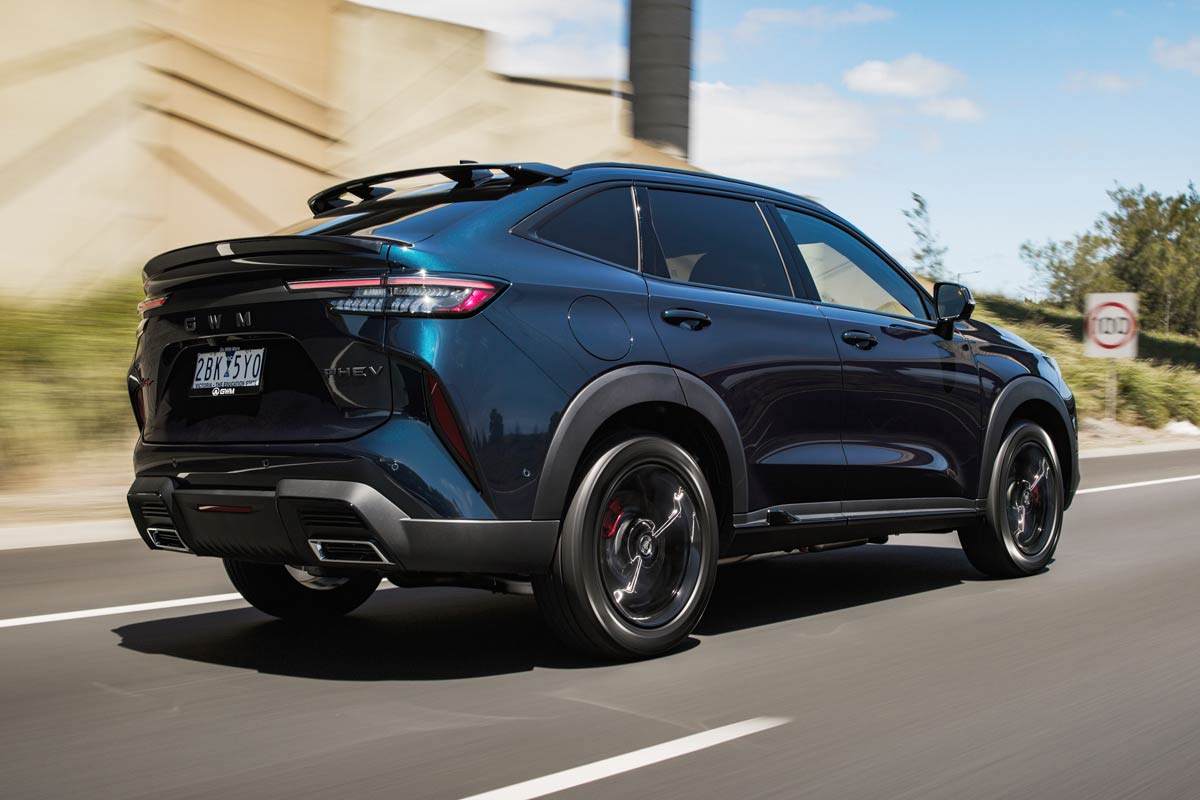
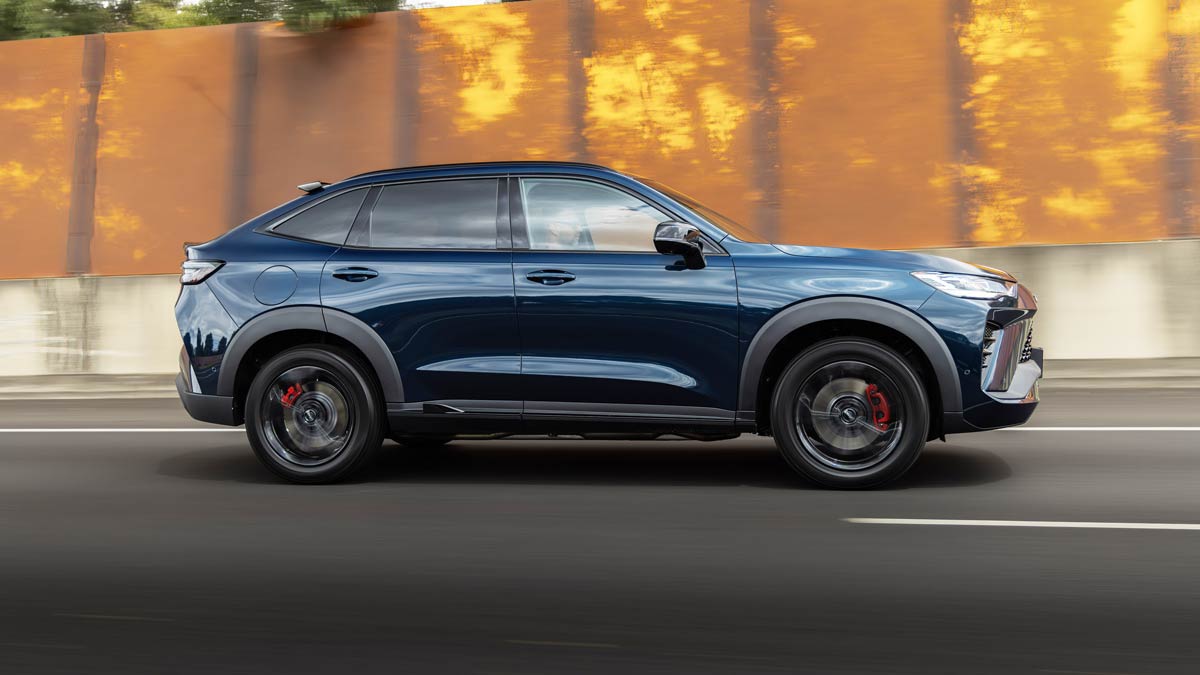
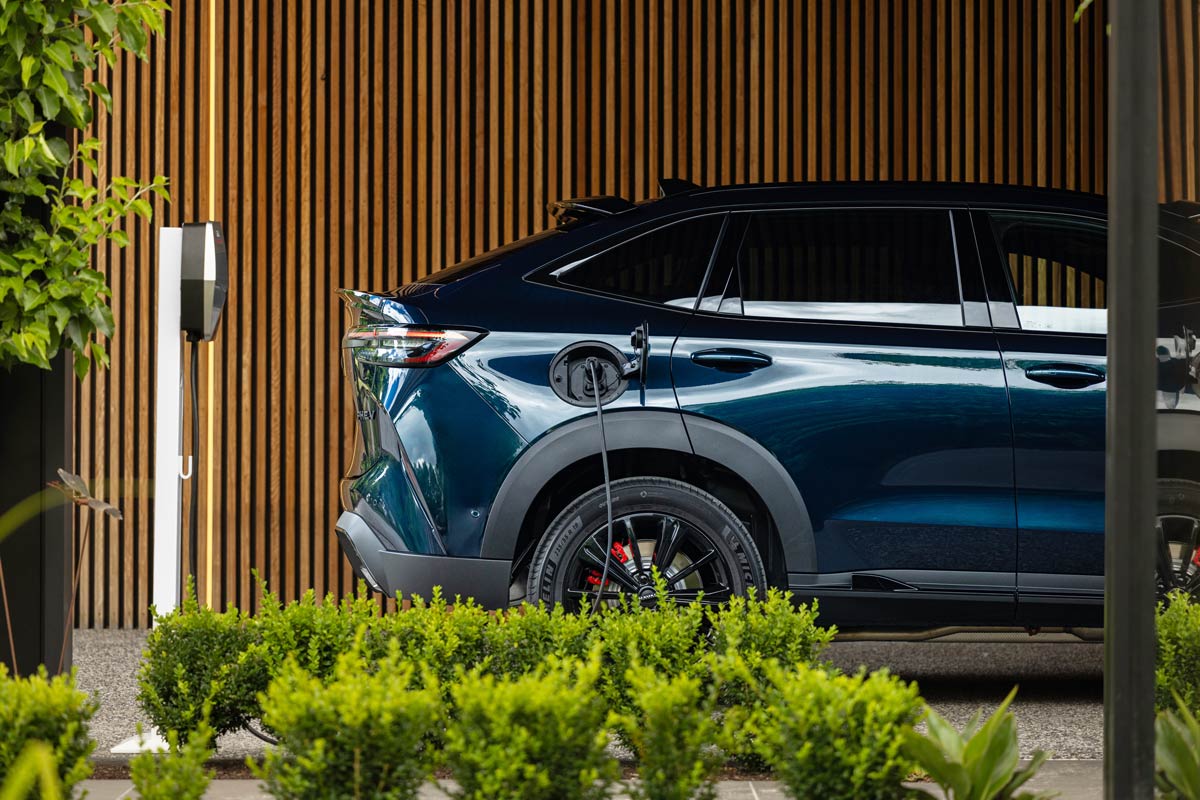
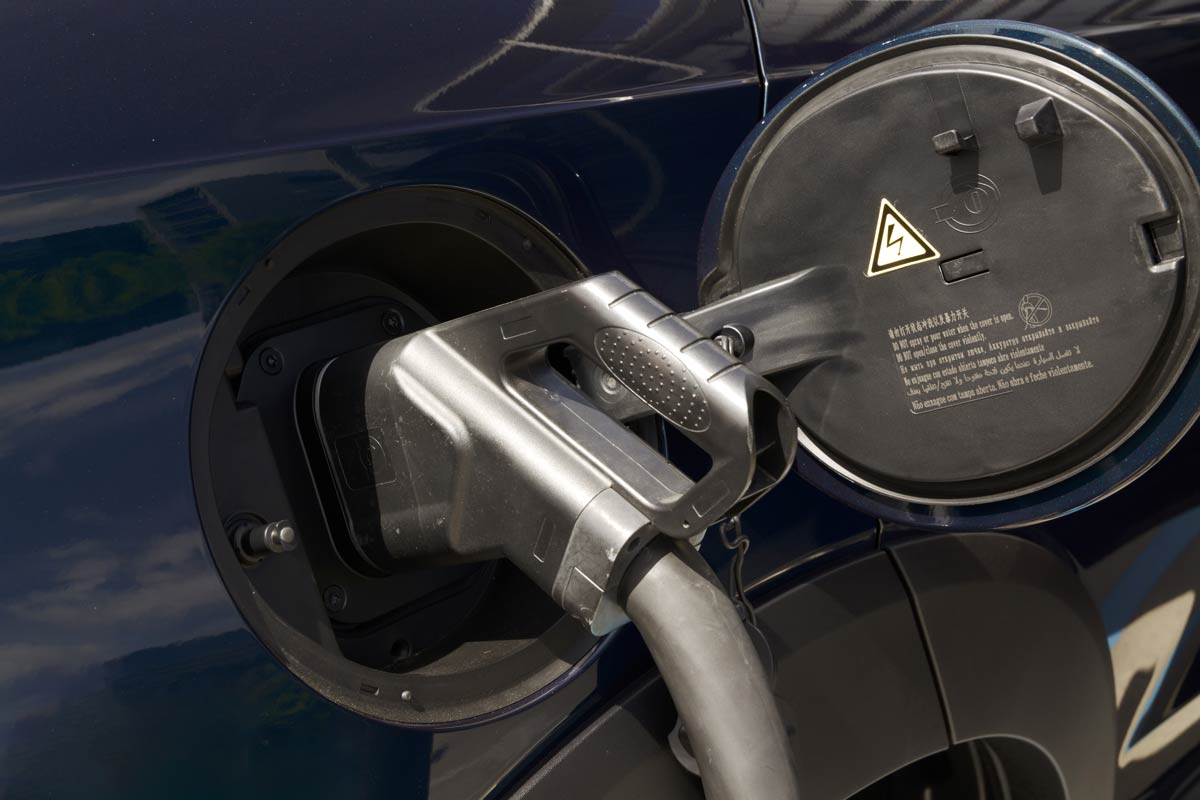
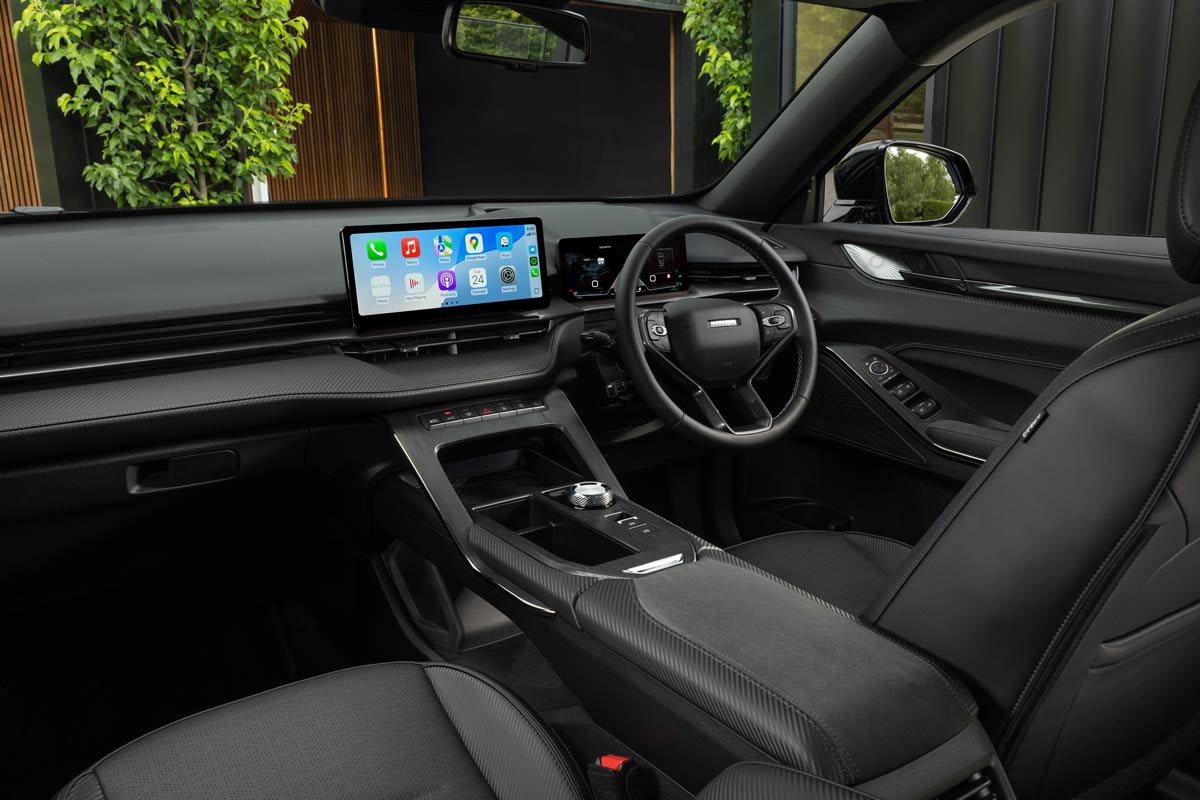
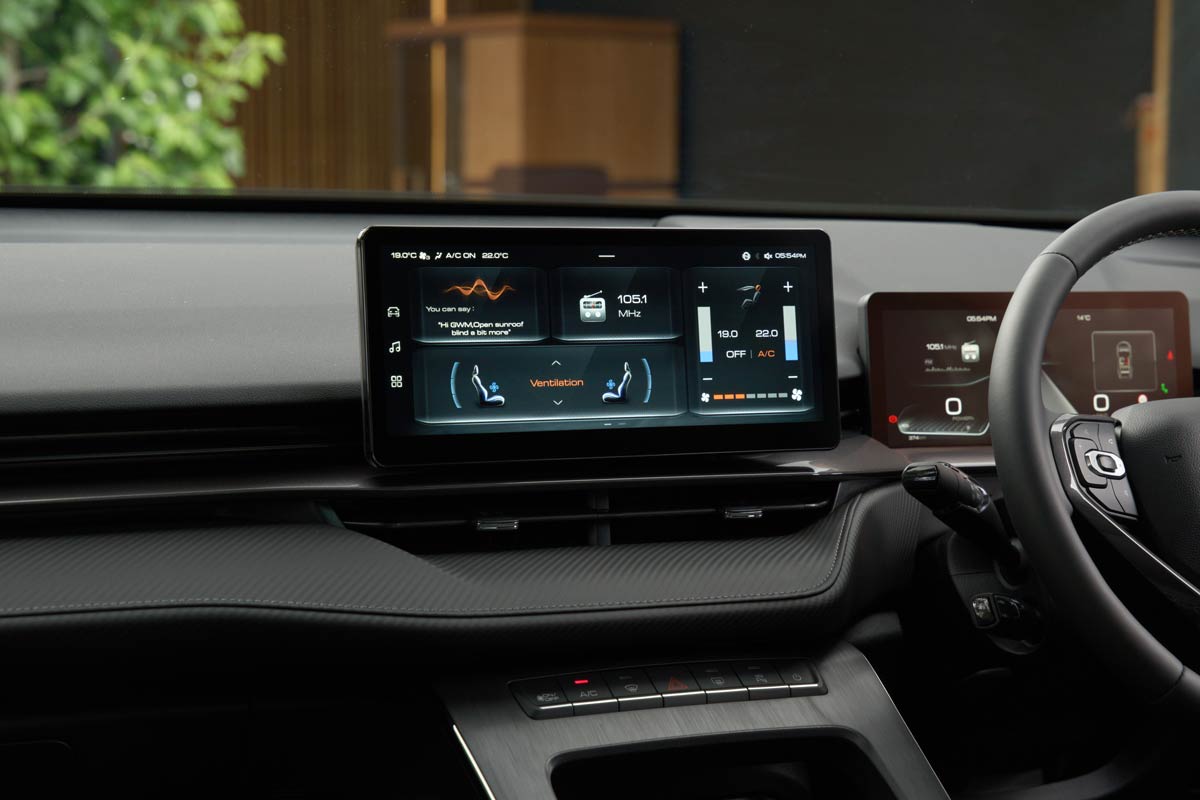
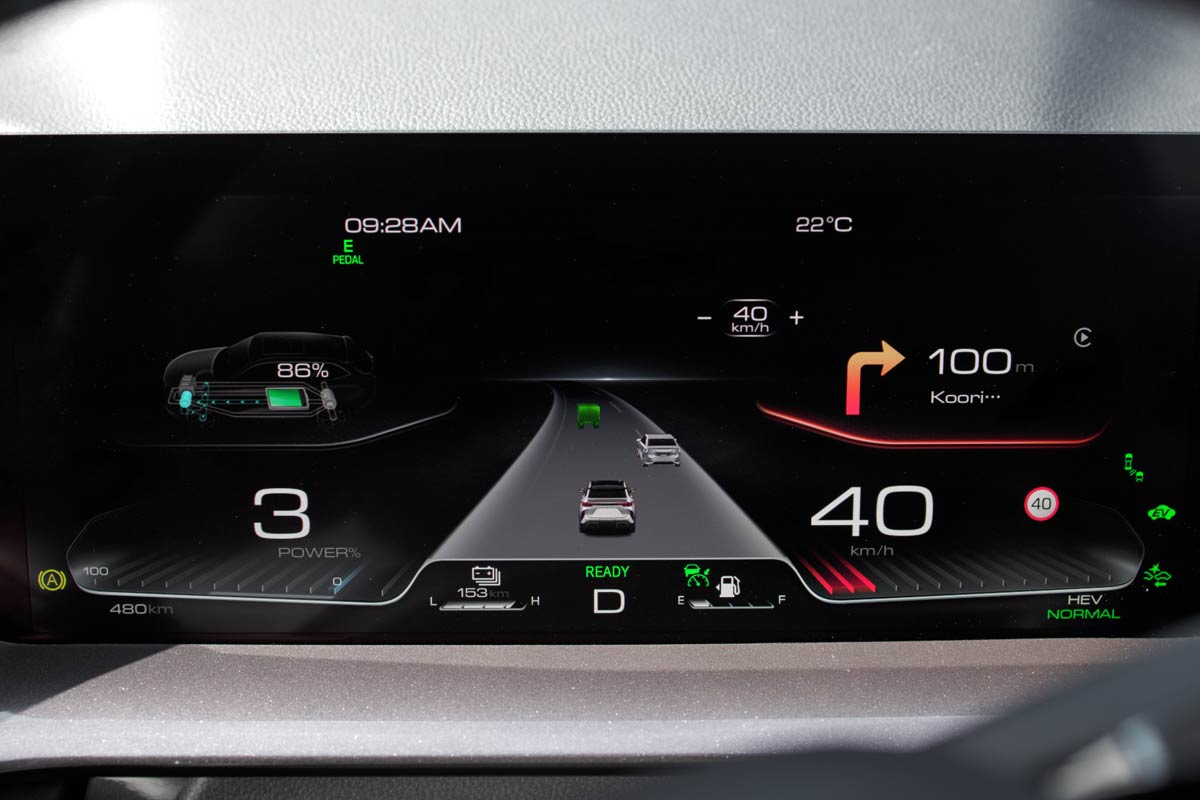
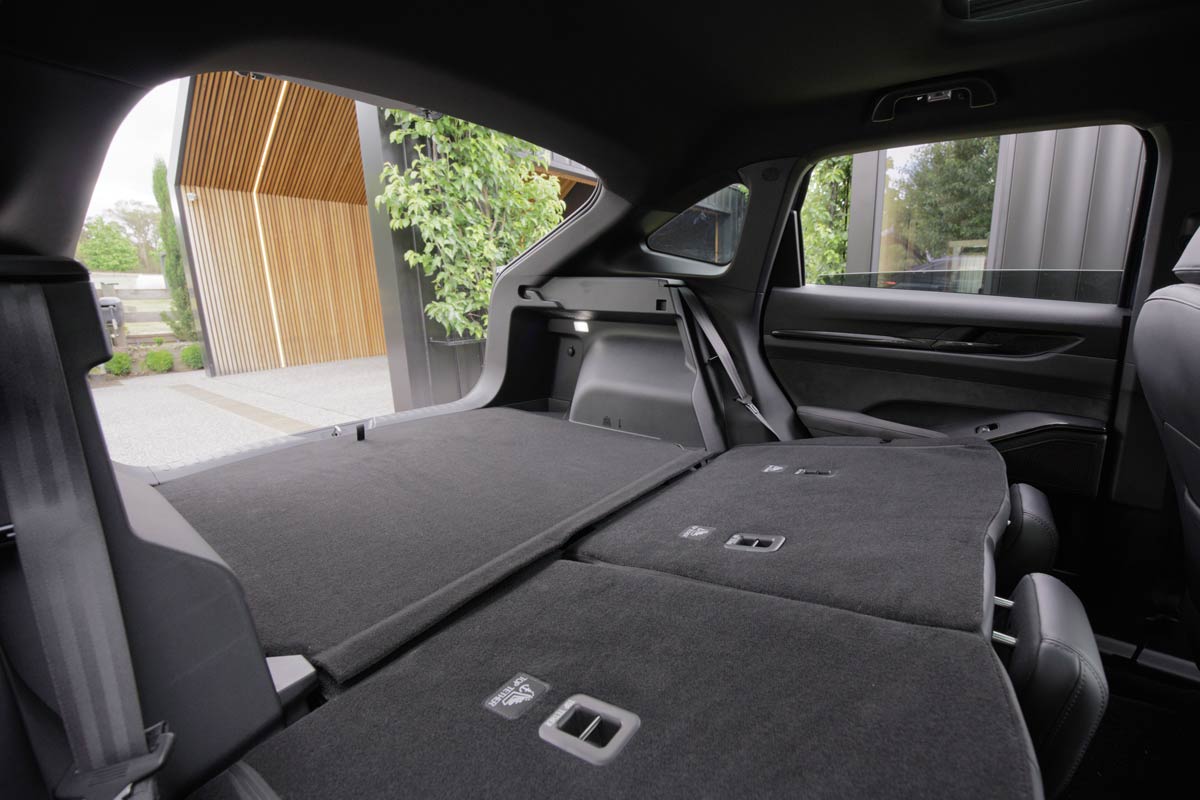
The GWM Haval H6GT PHEV sources power from a 1.5-litre turbocharged petrol four-cylinder engine, combined with two electric motors (one on each axle) which draw energy from a separate 35.4kWh battery.
All told, combined figures of the drivetrain are a sizeable 321kW and 762Nm – correlating with a claimed nought to 100km/h time of 4.9secs.
What’s also notable here is the claimed electric range of 180km using the NEDC cycle. At the time of writing, GWM Australia couldn’t provide the equivalent WLTP range, but read on for our real-world observations.
When you take the H6GT PHEV’s 55-litre fuel tank into account, plus its official claimed fuel consumption rating of 0.8L/100km, the numbers combine to provide a theoretical range of over 1000km.
PHEV efficiency is purely academic and you need to play the numbers right to extract this kind of range. But even so, the H6GT PHEV charts new territory on several counts.
There are other advantages to the driveline, including vehicle-to-load capability which allows you to charge small electric devices on the road. At the time of writing, the H6GT PHEV offers no vehicle-to-grid functionality.
With all this voodoo tech at play, the PHEV unsurprisingly carries a circa 450kg weight disadvantage over the H6GT petrol on which it is based, tipping the scales at about 2.1 tonnes kerb weight.
To counter that, GWM has fitted slightly bigger rotors and callipers, and revisited the suspension package to suit.
It has also lowered the official braked towing capacity to 1500kg (versus 2000kg on petrol).
GWM claims a maximum DC charging rate of 48kW, which translates to a five to 100 per cent charge in 60 minutes, or a 30 to 80 per cent charge in 26 minutes.
Using the GWM-supplied 6.6kW wall-mounted AC charger, the H6GT PHEV battery can be charged from 0 to 100 per cent in six hours. A typical household wall socket will take 12 hours to fully replenish the battery.
The Haval H6GT PHEV definitely moves the plug-in hybrid dial in Australia, with strong real-world electric range and minimal compromise over the equivalent petrol-powered H6.
However, as with the rest of the car, the H6GT PHEV driving experience would greatly benefit from a final once-over to truly set it apart.
The driving experience is mostly considered, with light steering at low speeds, decent bump absorption and inherent stability on the open road.
The EV side of the powertrain endows the H6GT with seamless take-off characteristics, and the electric motor will happily carry onwards to highway speeds in the right settings. The petrol engine isn’t quite as effortless in its operation, but the marriage between the two is a mostly happy one and ensures smooth, easy motoring.
The cabin environment is mostly quiet and refined on-road, and in keeping with the Haval’s competitive price tag.
That said, we take issue with the poor brake pedal modulation on test. The main drawback is a lack of consistency, beset with a soft, spongey action that carries right through to the stopper if you’re inclined to put some weight behind it. It’s one of the worst brake pedal actions in recent memory.
As mentioned earlier, the lack of physical buttons to adjust the regenerative brakes and driving modes is another mark against the H6GT. Some steering wheel-mounted paddle shifters or even a drive mode button would go a long way to making the experience more immersive, especially because that adjustability is already there and works quite well – it’s just buried in sub-menus.
In any case, the H6GT tracks faithfully through corners and sits confidently on the road over mixed surfaces.
On a 300km drive route which curiously bypassed any meaningful sections of corners, it’s still clear the PHEV’s circa 450kg weight disadvantage over the donor H6 petrol does impose some dynamic compromise when pushed. But all things considered, it covers the important bases.
There’s a real currency around what the GWM Haval H6GT PHEV is offering in Australia, especially as we navigate the forthcoming New Vehicle Efficiency Standard (NEVS).
It’s an SUV that stands out on its own and will surely attract interest among private and fleet buyers – despite the imminent end of FBT exemptions for PHEV vehicles (April 1, 2025).
The value equation is spot on, and the real-world efficiency is hard to deny.
If GWM is able to revisit some of the final tuning and cabin fitment aspects, there’s no reason the H6GT PHEV won’t set the plug-in hybrid electric vehicle on a new trajectory.